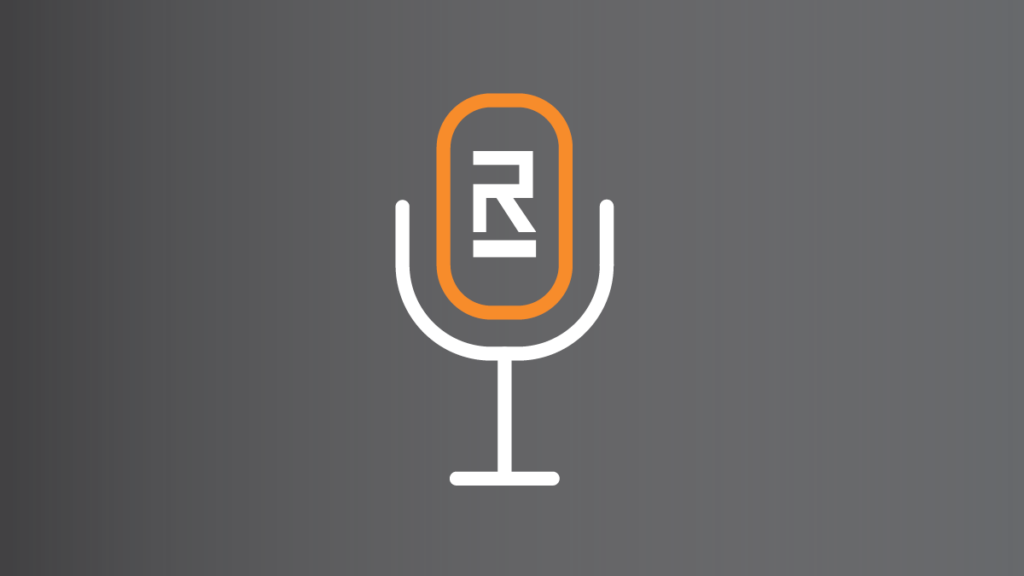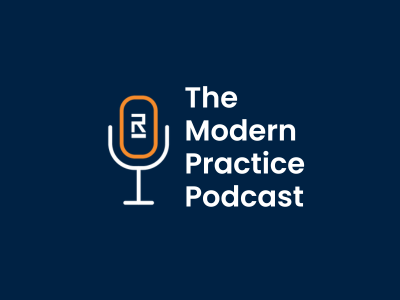Rectangle Health sponsored a podcast hosted by Becker’s Hospital Review, “Adopting Digital Payments within your Dental/DSO.” Listen to panelists Mike Peluso, Chief Technology Officer of Rectangle Health, and Mark Lakis, Chief Executive Officer of Southern Dental Alliance, talk about how new healthcare technology solutions can support practices, especially during current market conditions.
Transcript
Scott Becker 0:00
This is Scott Becker with Becker’s dental podcast part of Becker’s healthcare. We’re thrilled to be joined by two leaders in the dental payment world and industry, Michael Peluso with Matt McCammon. They’re going to talk to us today about how the utilization of healthcare payment technologies can improve patient experience. Michael and Matt, I’m gonna ask you to take a moment to introduce yourself, and then we’ll get into the core of the discussion, Michael.
Mike Peluso 0:30
Hey, Scott. Good to talk to you again. Again, everybody Mike’s Peluso, Chief Technology Officer over at rectangle health.
Scott Becker 0:37
Michael. Thank you, Matt.
Matt McCammon 0:40
Yeah, good afternoon, Scott. This is Matt McCammon, Executive Vice President here at Rectangle Health.
Scott Becker 0:45
Thank you. And I know that recto helps build a magnificent technology platform that uses tons of dental practices and dos. Matt, take a moment and talk about why the healthcare industry is so different than other businesses in terms of getting paid. And obviously touch on dental some as well.
How the Healthcare Payments Industry is Different
Matt McCammon 1:04
Great question. You know, when I go to the grocery store, when I go to a retail outlet, when I leave with my product, I have always paid 100% of the time before I leave with that product. When I go and get my car serviced, I’m going to pay before I leave with my car. Healthcare is the only industry I know of where I can go get service, and leave without paying. And, and, you know, I’m thinking these healthcare providers provide incredible service to me, I’m their patient, and they’re helping me maintain my wellness. And yet, they’re often last in line for collecting payment. And so let’s kind of talk about why is that probably two different reasons I can think of health care providers first and foremost, like I said, before, they’re focused on caring for me as the patient. And when they see me walk in the door, they’re not thinking, How do I monetize? Matt McCammon the patient, the thinking about how do I restore health, or maintain health for Matt McCammon the patient and that’s what I want as a patient, I want them to care for me first. And then secondarily, the commercial payer contract process is actually very complex. And understanding the patient responsibility often doesn’t come until after the insurance adjudication process. So healthcare practitioners are really in a dilemma here. And rectangle health has built some tools that account for these realities, and help those healthcare practitioners collect payment in a timely manner.
Scott Becker 2:39
Thank you, Matt. Thank you. And when I hear you talk about I think, my God, which other vendors were the same other place, I get services from with the same and Pam so quickly, but that’s not really the point of today’s discussion. It’s how do we make sure providers get paid more quickly and better? Mike? How is COVID-19 serving as a change agent for practices that weren’t generally late to adopt more contemporary or newer payment solutions? How has COVID-19 chains that have accelerated that?
Mike Peluso 3:09
Yes, Scott, absolutely. I think when you think of the word change agent, it’s more of the pandemic forcing providers to think differently. It forced providers to say, Okay, how am I going to collect payment from the patient? What am I going to do to get paid? How important is that to my practice, because now My, my, my patient volumes have actually gone down to now payment becomes a lot more important. So the pandemic really forced, and not just to change it, but force providers to think differently. Also providers, the staff now is really busy. They’re no longer sort of that primary, Hey, can we get your copy? Hey, can we get your deductible? Hey, can we talk about your financial responsibility? We’re really thinking about, Hey, are you wearing the right PP Hey, is the waiting room empty, so that the providers really think that the pandemic has driven them to think about different things other than payment.
But now that the payment still needs to be collected, there still needs to be technology, I rectangle health, we noticed a lot of our clients were were able to quickly adapt to the pandemic, because they had technology in place where they could suddenly send an email to collect the payment, or they could suddenly send a text to collect a payment or a lot of our customers even had card on file for their patients. So the pandemic for them was just a shift to start using those types of technologies and start engaging their patients with them.
Provider Pain Points Addressed
Scott Becker 4:34
Thank you very, very much and Matt, Rectangle Health, what types of pain points does this address for providers? One of the things that it does, how do you solve things for providers?
Matt McCammon 4:45
Sure, a few things come to mind. And Mike hit the nail on the head when he said that the practitioner and the office staff have a practice – they’re incredibly busy.
One thing we do know is they’re all using an operating system with a Practice Management System. In their core business, it’s like the central nervous system of the practices. And we’re working with that software application all day every day. And so we want to make the process very efficient that they operate with that practice manager system and how they interact with their patients. And so our software actually works in concert with their practice management system, whether that’s one system, or maybe they have 100 locations that support three different practice management systems. Our system can work in concert with all the above, so kind of one, I would say process improvement and efficiency. Number two, safety and security come to mind.
And I think about that in two different dimensions. There’s the physical and then the technological, as Mike just indicated, and your question suggested as well, COVID-19, it is a reality today. And folks want to protect themselves physically, from that risk. And so the idea of creating virtual rating rooms, a digital check-in experience, to be able to make payment in a contactless way, either through their mobile device or online, we have technologies that enable that physical safety and security of the patient and the practice. Secondarily, technologically, card data is very sensitive. And we want to make sure we maintain that, or we protect that card data. And so we’re PCI certified as a card industry term. We’re Point to Point encrypted, our software is HIPAA compliant. So we check a lot of the boxes required to really say, we’re going to keep card data secure if our technology is secure.
And then the third dimension, probably which goes unspoken, too often. I’ll call it simplicity. And this revolves around change can be intimidating, it can be daunting to practice. And we appreciate that we recognize that. And so we have a team of people that come alongside the practice, and install the solution that trains them on the solution and standby at the ready to help answer questions we recognize we like questions, we recognize in the questions, it shows engagement, and adoption, and that can ultimately help your practice. So we get excited about having this team of people that’s ready to help. part and parcel with that probably worth mentioning is our software is modularized. Which means if there’s only a certain component, that you as a practice need to help with your your read cycle and your patient payments process, we can deliver it just as a single component, whether it’s online payments, whether it’s face to face payments, or text payments, we can deliver solutions, according to the parameters and the needs of the practice. And that can evolve and change over time. So a lot of different capabilities. I think we saw a number of different pain points from practice.
Scott Becker 7:55
It took for a moment, you talked about the issues in trying to bite all this off at one time in trying to make sure it’s user friendly. Can the staff and in the dental practice or DSL, any work with just some pictures to start with to work with all of them? What’s your thoughts on that?
Matt McCammon 8:13
Yeah, so we have a robust number of solutions, and sometimes practice once and need all of them. Other times they just want a piece of it, we can deliver the solution specific to how the practice needs it. So if they just want to be able to collect payments online, we can deliver just that piece. If they want. If they want something more if they want text payments and online payments, we can deliver that. So we’ll deliver the solution that the practice needs. And that’s one of our differentiators. Just that flexibility and the ability to adapt the solution to meet the practices specific needs.
Underutilized Features of the Practice Management Bridge
Scott Becker 8:50
Thank you very much. And think about healthcare, payment technology. Wood that people use all the time, there’s horrible use. What do you look at and say, This is a piece and not everybody uses but they should it’s one of the best pieces, somewhere thoughts on what’s most valuable yet underutilized.
Mike Peluso 9:11
And sky as a technology guy, I’m gonna take that answer. And as a technology guy, what I’m probably going to do is not give a very technological answer. I think the most underutilized feature of healthcare payment technology is the patient. I think a lot of people expect me to say, well, well, it’s this technology, or it’s that technology or it’s this cool feature that it’s this cool widget. It really is the patient. They’re the most underutilized feature. A lot of people don’t understand or a lot of practices don’t understand that. The patients want to make payment. Patients are used to making payment. everywhere they go. Just like Matt said in the first question, everywhere they go, whether it be a grocery store, a gas station or car dealership, whether it be Amazon or Netflix, they’re making payments to consume things. Well, that’s true. In a medical dental office. That’s true in a DSO. That’s, that’s true just about everywhere, in that the patients as they receive the services, or as they’re about to receive the services, they want to pay. And they can be asked for payment at the point of care, but they could also pay ahead of time, they could also pay after the back. But I think really that was an underutilized feature. Although it’s not a very technological answer, that most underutilized feature is definitely the patient.
Scott Becker 10:29
Fascinating in my another question for you, what are some of the other features of the technology that you see pieces of practices, maybe not taking advantage of where someone thinks they’re not using well enough, and so forth?
Mike Peluso 10:44
Yeah. And that’s, that’s Scott, that’s where we start talking about the newer features. And when we say new, they’re new to dental, and they’re new to healthcare, and they’re new to DSOs. But they’re not new to patients, and they’re not new to consumers, online payments, the ability for the patient to go to a website, quickly make a payment, mobile payments, the ability for the patient to be to be engaged on their phone, so they can make a payment from their phone. And that could be at the point of care. And it could be contactless for COVID, where they’re just waving their phone over a payment device. And then the last one, and this is the newest one. And I think, to your question earlier regarding COVID is that that touch free payment, or that that’s just you’re not even paying its card on file, it’s Text-to-Pay, it’s really that the patient is paying, it’s just part of their overall patient experience. It could be before care, it could be after care, but that Text-to-Pay the Card on File, that’s really the I think that the most underutilized one and the one that all of these offices can definitely be taken advantage of.
A Look Towards the Future
Matt McCammon 11:47
Thank you, Mike. And Matt, yes, you both have comments in this 2021. What are some of the noise, what’s going to happen without your payments versus 2020? When I was 1020, it was a year of advancement in integrating lots of different things. There’s a context of emotions. But it was sort of, you know, there is a feeling, at least in the healthcare business, generally not so much a dental, that there are all kinds of challenges in getting these things wound together and integrated. Right. In dental, you folks at Redtail seem to be making great progress. What do you see as the big things that you’ll see going on in 2021 payment solutions?
Mike Peluso 12:25
And Scott to what I said earlier, you know, let’s get COVID behind us. And let’s get back to the business of patient care. I think that’s going to be really important and, and really putting that patient first, putting that patient in the driver’s seat of their care, I think is going to be a big theme for 2021. And the ability for the patient to pay on their terms, not necessarily on the provider terms. But remember that if they’re paying on their terms, they’re still paying. We don’t have to ask patients for payments. Patients can make payments via text, patients can make payments via a card on file patients can make recurring payments. So it’s, it’s putting that patient back in control is definitely going to be the theme for 2021.
Scott Becker 13:06
Thank you, and Matt? Did you want to comment on that as well as what you see in 2021?
Matt McCammon 13:10
Let’s say simply to compliment Mike’s thought is how do you do through software? Software, I believe will rule the day in terms of putting that patient back at the center, especially around the payments process. Payments have become a commodity and software is the differentiator. And so our intention is to help solve that problem through software enabling as a practice to put that patient back at the center of care.
Scott Becker 13:40
Thank you very much. Michael and Matt. More can people learn more about Rectangle Health in which you all do.
Mike Peluso 13:51
Scott as always, they can go to our website and follow us rectanglehealth.com they can go to our LinkedIn page and follow Me personally, Michael blue. So I think the same goes for Matt.
Scott Becker 14:03
Thank you very much, Michael and Matt. We appreciate you joining the Becker’s healthcare Becker’s dental podcast very much. Always great to work, what you’re doing. It’s remarkable. Thank you very much.



